Federal Republic of Germany Pavilion
The German Pavilion had a unique architectural style in what is known as "space frame" architecture; enclosing a building space at the least cost. Its striking silhouette resembled an enormous modernistic tent. Its roof, supported by eight steel masts, of which the highest was 120 feet high, was made of steel netting lined with a 100,000 square foot translucent plastic skin.
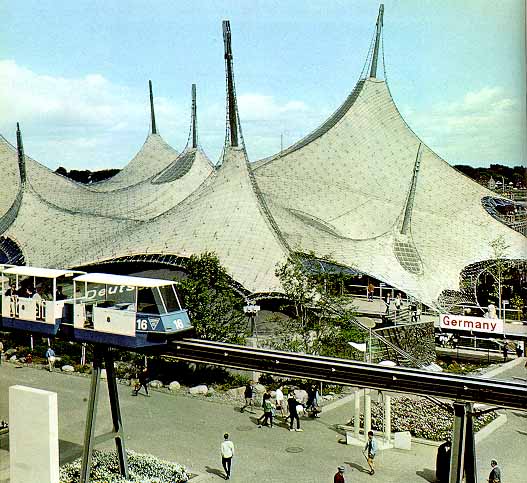
|
The German Pavilion resembled a modernistic circus tent.
|
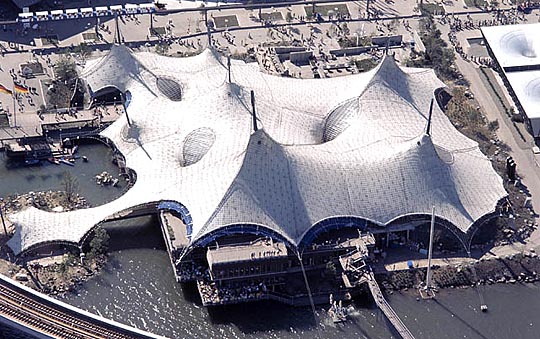
|
Aerial view of the German Pavilion.
|
Inside, under the tent, were various industrial displays and exhibits. There were optical and precision instruments (a camera used by American astronauts), and a bathyscaph used for underwater exploration. Other exhibits featured the world's first printing press used by Guttenberg to print his Bible, and a history of music from Bach to Stockhausen.
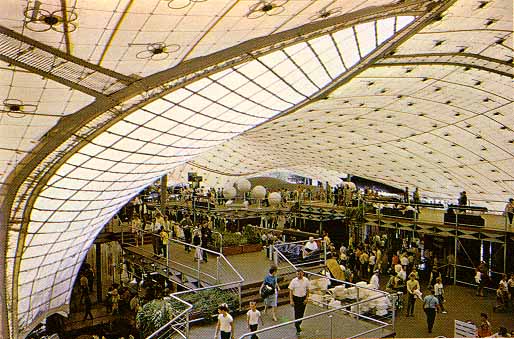 |
The interior of the German Pavilion had a very spartan look.
|
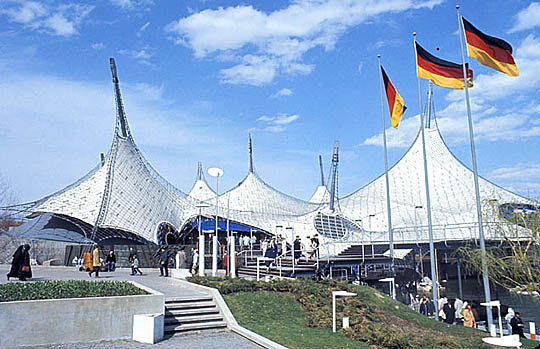
|
The German Pavilion resembled a modernistic circus tent.
|
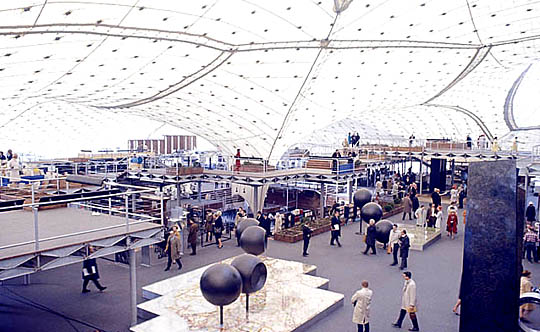
|
The German Pavilion's interior was primarily product displays with
a few added historical displays to show German science and culture.
|
|




